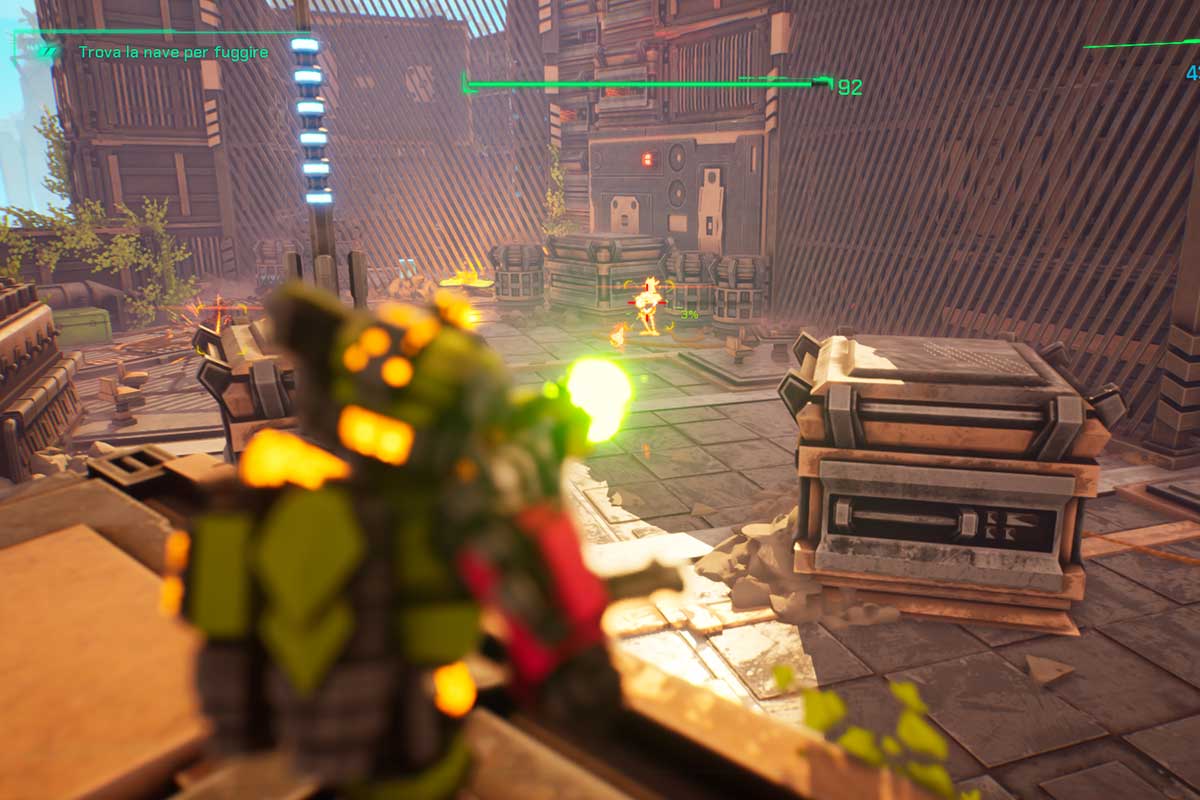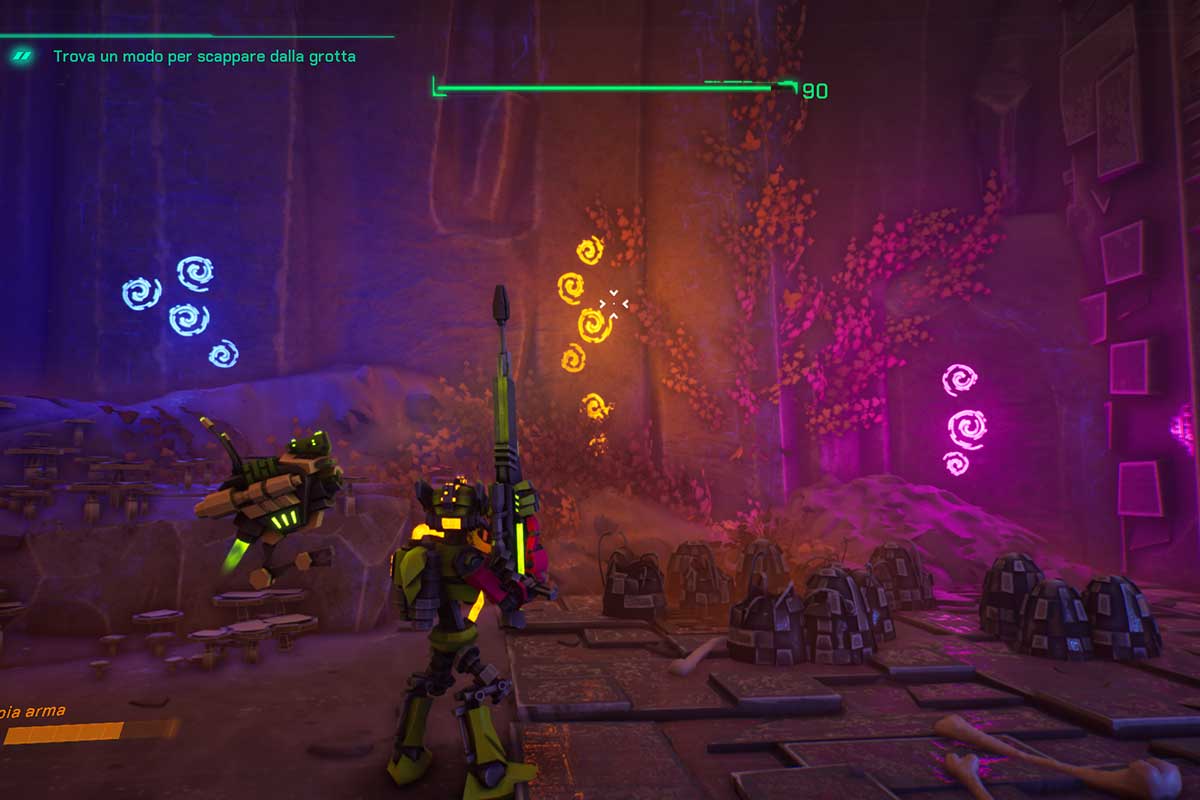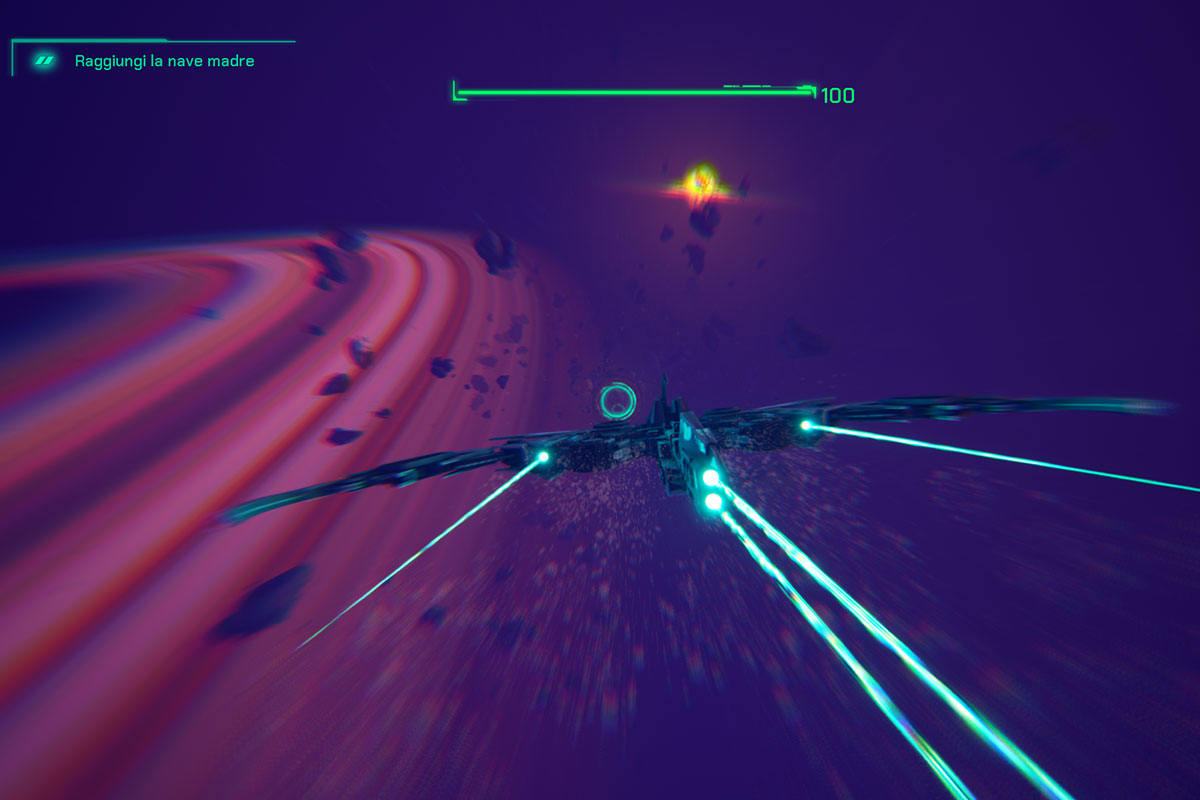Once upon a time there were action platformers. Historical series such as Ratchet & Clank And Jack and Daxter were the glory of the sixth generation of consoles, with their irresistible mix of action, adventure, shooting, platform and mini-games of all kinds, capable of offering a gaming experience tout-court that would delight all types of audiences (even if mainly childish/adolescent) giving hours of lightheartedness and fun.
The boys of Evil Raptor they grew up with this type of game, and their intention was to offer today’s audience a formula that mirrored that game design philosophy in every way. The result is Akimbot, a humorous space epic which features the exploits of a new dynamic duo. Will it live up to its spiritual fathers?
In a galaxy far, far away
This type of production has always been characterized by a basic narrative component, necessary just to move the protagonists from one corner of the game world (or worlds) to another with the ultimate goal of saving it from the evil machinations of the villain on duty. Akimbot is no exception, proposing a thin plot that is little more than a pretext to set events in motion and justify a sci-fi-themed gameplay.
In a universe where humans don’t exist and the only “living” beings are robots, the protagonist Exe is a bounty hunter who finds himself caught in a plot much bigger than himself. The terrible droid Malware (Evilware in the original; but the localization in this case is very apt!) intends to use an ancient technological artifact to enslave swarms of dino-robots with which to conquer the entire universe. The galactic ambassador addresses precisely Exe – who has escaped from prison in a daring way along with the petulant Dataset, who reluctantly joins his escape – to foil the terrible plan. Our heroes, who can’t stand each other, will have to learn to work together for the good of the galaxy.
The story will take more or less dramatic turns – including time travel, changes of sides and other twists – but without ever departing from the genre’s conventions. During the about 8 hours needed to complete the game (a little less if you’re fast) will still give you enough motivation to continue the adventure, racing here and there across planets with varied settings (from desert expanses to aquatic paradises, from frozen caves to volcanic surfaces) without forgetting some welcome orbital interludes aboard space fighters.
Don’t think, however, that this means absolute freedom from the point of view of progression: Akimbot is an extremely linear titlewhere the order of the levels is predetermined and exploration is reduced to the bare minimum. Each stage is in fact a long obstacle course in which platforming phases alternate with fights against hordes of enemies, ending with the inevitable boss. In the extremely linear path that goes from point A to point B you can only encounter a few minimal deviations that lead to the collection of collectibles, completely useless from the point of view of progression or the improvement of our character.
This explains why I think it’s fair to consider Akimbot an action platformer rather than an action-adventure. The “adventure” dimension of the game is in fact limited to the picaresque narrative, certainly not to the gameplay itself which is ultimately an alternation between well-calculated jumps and sequences of shoot-shoot. Let’s look at these aspects in more detail.
Cartridge jammed
As mentioned, Akimbot’s gameplay is divided into two main components: platforming and combat. There is also an extra one, which includes occasional minigamessections of guide and short parentheses puzzle. In this tripartite division The brunt of the burden is on combatwhich usually occurs in limited areas and almost always involves “clearing the room” in order to proceed. To do this we can resort to a melee attack, but in the vast majority of cases we will rely on our arsenal of guns.

During the game we will get four main weapons (assault rifle, sniper rifle, machine gun and grenade launcher), each recallable at any time by pressing the corresponding button on the D-pad. Each weapon is better suited to dealing with specific types of enemies, although it must be said that they are all potentially interchangeable; only in some cases will we necessarily need specific weaponsfor example to eliminate opponents’ energy shields.
In addition to these weapons, through special shops we can buy and upgrade 4 additional ones, paying with the currency collected from special boxes scattered throughout the levels. These special weapons are quite different from each other – they range from a continuous jet laser cannon to an acid-throwing rifle – and each upgrade adds particular modifiers – for example, the double pistols can guarantee a temporary shield. However, the feeling is that these weapons have been implemented very poorly in the game design.since their use is practically never necessary.
For example, we used them very little, because the only real advantage is that they do damage faster than normal weapons; however, unlike these, they do not have infinite ammunition and they run out of energy very quickly, which recharges by defeating other enemies. So the gameplay loop would like to push you to use normal weapons until you recharge the special ones, to be used to maximize the momentary damage, and start again. All things considered, however the advantage is so small that it is often more practical to rely only on basic weapons.
Also consider that you can only carry one special weapon at a time, so when you need it – for example in a boss fight – you might find that the one you brought with you is not very effective in that specific situation. In short, Evil Raptor could have implemented these weapons much better, for example by setting up a basic system of weaknesses and resistances, or making them useful gadgets for exploration. So they are instead a frill that adds little or nothing to the experience.

On the go
As for the platforming phases, the levels can be considered as long obstacle courses that will constantly force you to make well-calculated jumps and avoid deadly traps. Here too there are no particular creative whims, but the usual gathering of crumbling platforms, incinerating laser beams, suspended conveyor belts in the void and other amenities help to keep attention and fun high. Occasionally Akimbot attempts to revamp the formula by adding stealth phases or parkour sections.but it sticks to really basic mechanics and never tries to propose something new and original.
The impression of excessive essentiality in the game design is also found in the paucity of maneuvers that Exe has at his disposal, literally three: jump, dodge and shoot. Our hero does not crouch, does not slide, does not climb, does not crawl, does not roll, in short he is extremely limited with respect to the actions he can perform, and the level design suffers negatively: the levels in fact suffer from little variety, all similar to each other in terms of settingand they barely offer any different activities from one to the other.

Every now and then, as I mentioned before, we come across some puzzle that interrupts our progress until we have solved it. These are fun variations on memory games, number combinations or rhythm game phases, everything easily overcome in a few attempts and with minimal reasoning, but at least it helps break the underlying monotony.
The levels stand out above all for their aesthetics which, despite a reduced polygonal mass, are able to give different identities to the various worlds and provide some glimpses of sure effect, such as in the space combat sequences. And speaking of the Vehicle driving phaseshere too we see a potential that is not fully exploited.
In the game we will have the opportunity to drive land and air vehicles: among the first we can include a kind of buggy, a racing off-road vehicle and a tank, while the second are obviously spaceships. While the movement feedback given by the latter is good and allows for spectacular orbital combat sequences, the first suffer from “tank” controls, inertia and unexciting physics, making driving them often more of a chore than fun. Some driving sequences then drag on for several minutes too longespecially the scripted ones, forcing you to repeat them from the beginning in chaos of failure. Nothing insurmountable, but a slightly unnerving situation that could have been thought of better.

If nothing else Akimbot makes the immediacy of the gameplay its raison d’être, eliminating the game over: in case of death you instantly restart from the last checkpoint, there are no lives, resets or anything of the sort. This speed of the game formula, which sacrifices every frill on the altar of pure gameplay, is both its merit and its limit. Evil Raptor has gone so far to the heart of the genre of reference that it runs the strong risk of drying it up. The result is a game that can please fans of the genre or can serve as an excellent introduction to those who are approaching it for the first time, but it is absolutely not able to compete with the sacred monsters of the sector or satisfy the appetites of the most experienced players – in this sense the comparison with the very recent Astro Bot is merciless.
However Akimbot is not a game to be despised, on the contrary: in its simplicity it does exactly what it needs to, resulting in a low-budget and distilled version of the classics of the genre of reference. The passion and the discrete skill of Evil Raptor manage to shine through, now it’s just a matter of refining them properly. I await with curiosity their future efforts.
#Akimbot #Review #action #platformer #starts #basics